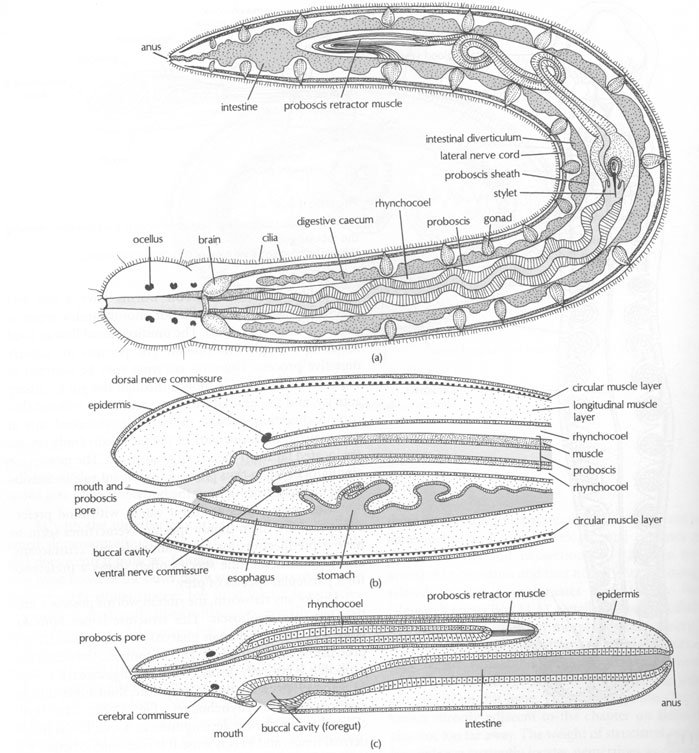
You see, the proboscis isn’t just a fancy tongue; it’s an evolutionary marvel. Whether you’re curious about their hunting technique or just drawn to the weirdness of nature, understanding this part of the ribbon worm’s anatomy will open your eyes to how diverse life can be. So grab your coffee, and let’s take a closer look at the amazing world of ribbon worms and their proboscis!
What Are Ribbon Worms?
Ribbon worms, or nemerteans, are a group of invertebrates that live in marine, freshwater, and terrestrial environments. They are known for their long, slender bodies, often ranging from a few centimeters to several meters in length. Picture a worm, but much more vibrant and colorful! These creatures can be found hiding in mud, sand, or under rocks, and they tend to prefer shallow waters.
One of the most interesting things about ribbon worms is their unique body structure. Unlike other worms, ribbon worms have a *coelom*—that’s a fluid-filled body cavity that provides support and flexibility. This gives them a bit more oomph in movement. The color and patterns on their bodies can vary a lot, making them not only functional but also quite beautiful.
You might be wondering, what makes them so unique? Besides their body type, ribbon worms are particularly famous for their proboscis. This long, retractable structure plays a key role in their feeding and hunting habits, which we’ll explore more in-depth shortly.
The Structure of the Proboscis
Now, let’s get into the nitty-gritty: the anatomy of the proboscis itself. This fascinating appendage is usually stored inside the body when not in use. When it extends, it can be as long as the whole worm itself! That’s right—it can pop out and then retract just like a tape measure. It primarily functions as a hunting tool, but there’s much more to it.
The proboscis is lined with specialized cells and covered in slimy mucus that helps it capture prey. Think of it as a super-sticky tongue. When a ribbon worm spots a meal, like a small fish or another worm, it can shoot out this proboscis at lightning speed. It’s not just for show—it’s a crucial adaptation for catching food in the wild.
Inside, the proboscis also contains channels that allow it to shoot out venom—a cocktail of chemicals that helps subdue its prey. This makes the ribbon worm a bit of a ruthless predator in its watery domain. The functionality of the proboscis not only highlights the creature’s evolutionary adaptations but also its role in the ecosystem.
How Does the Proboscis Work?
You might be curious about how exactly this proboscis functions when it’s out there hunting. The magic starts with a muscle mechanism that allows the ribbon worm to extend and retract the proboscis. When the worm decides to snag a meal, it contracts muscles within its body. This contraction creates pressure that pushes out the proboscis in an impressive, quick motion.
Once the proboscis is out, it can latch onto the prey using the sticky mucus. Here’s where the venom comes into play—it paralyzes the caught prey, making it easier for the ribbon worm to draw it back into its body. Isn’t that wild?
This predatory behavior not only shows how ribbon worms have adapted to their environments but also how they play an important role in their ecosystems as both hunter and prey. This type of hunting strategy is energy-efficient, allowing them to maximize their food intake while minimizing energy expenditure.
Types of Proboscis: Variations Across Species
Not all ribbon worms are created equal, and their proboscises can vary quite a bit based on their species. Some ribbon worms have a simple, smooth proboscis, while others boast a thorny or spiny appearance. These variations often correlate with their hunting methods and types of prey.
For instance, a species with a more rugged proboscis might hunt larger prey by grappling with it more effectively, while others that prefer smaller prey might have a more streamlined structure. It’s like they’re tailored for specific types of snacks in the vast buffet of the ocean!
In a way, the diversity in proboscis type is a great example of natural selection. Over time, those with the most effective proboscis for their environment have thrived, paving the way for the rich variety of ribbon worms we see today.
The Importance of Ribbon Worms in the Ecosystem
You might be wondering why it matters to study these unique creatures. Ribbon worms play a vital role in the ecosystem, serving as both predators and prey. They help maintain the balance in their habitats by controlling the populations of smaller animals. This ensures that the aquatic food web remains healthy and dynamic.
Moreover, ribbon worms contribute to nutrient recycling in their environments. As they consume organic material and break it down, they help return nutrients to the ecosystem, supporting a diverse array of life. They are like tiny recyclers of the ocean!
Additionally, understanding ribbon worms and their anatomy can provide insight into evolutionary biology and the adaptations of other creatures. They serve as a fascinating case study on how life evolves differently based on habitat and dietary needs.
The ribbon worm’s proboscis is more than just a feeding tool; it’s a symbol of how nature has adapted to meet the challenges of survival. From its unique structure to its various hunting techniques, understanding its anatomy gives us a glimpse into the incredible diversity of life on our planet.
So, the next time you think about worms, remember there’s a whole world of fascinating beings out there, each with its unique adaptations. Ribbon worms remind us that even the smallest creatures can have an impact on their environment, and studying them helps us appreciate the complexity of life. Nature is truly amazing, isn’t it?

